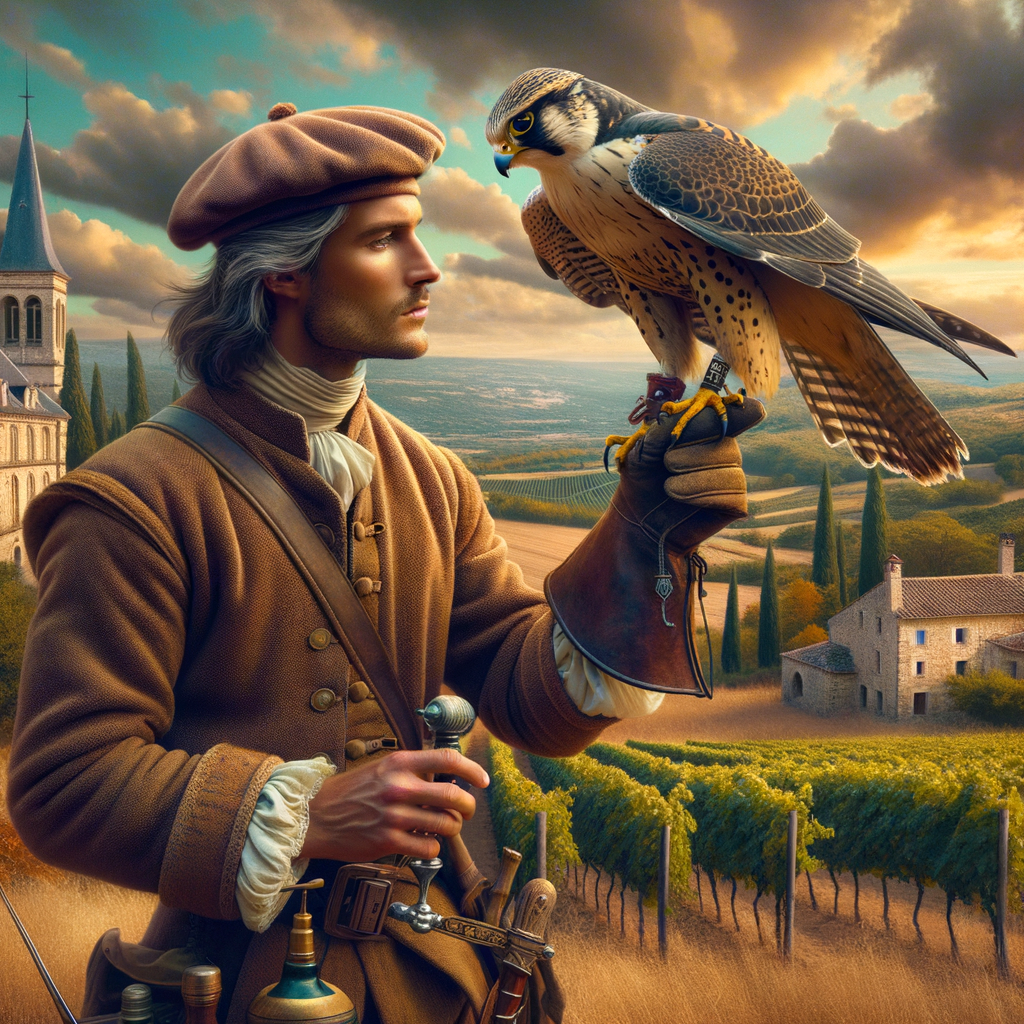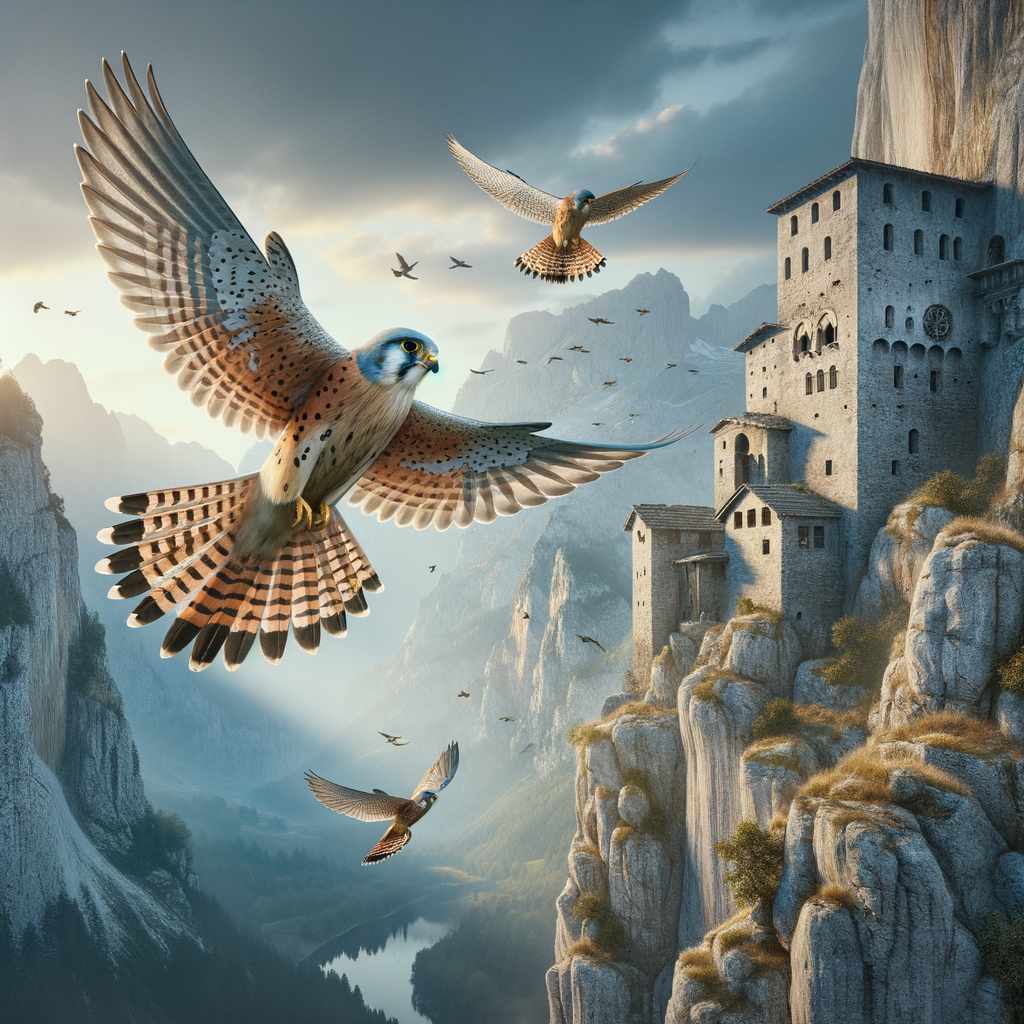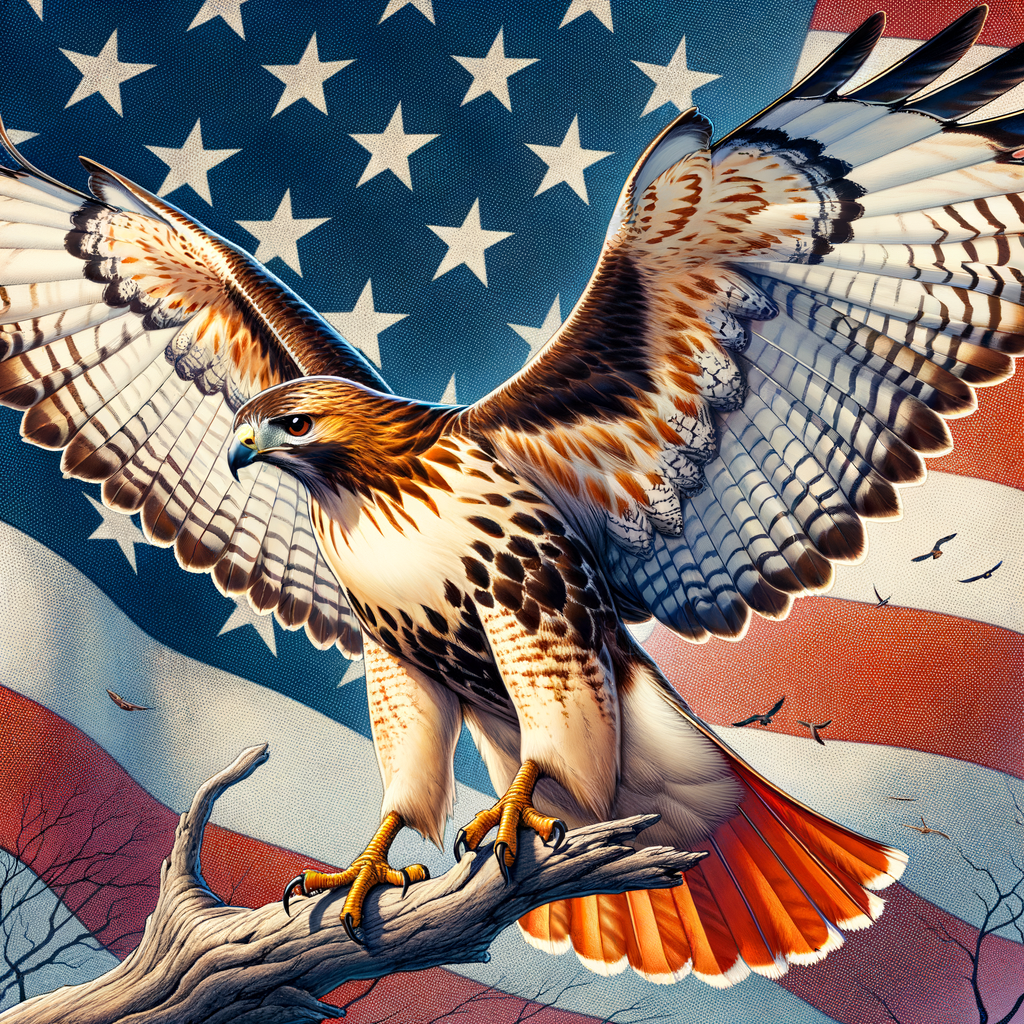Understanding Falconry in French Culture
- Falconry is the ancient art of training birds of prey to hunt.
- In France, this tradition dates back to the Middle Ages.
- Falconry was popular among French nobility for hunting and sport.
- It involves training falcons, hawks, and eagles to hunt in cooperation with their human handler.
- The practice requires patience, skill, and a deep bond between the bird and the falconer.
- Falconry is recognized as a living heritage and protected by UNESCO.
- Modern falconers in France continue to practice and preserve these traditions.
- Ethical and sustainable methods are crucial in contemporary falconry to ensure the well-being of the birds.
- Falconry is a way to connect with nature and understand the behavior and ecology of birds of prey.
- Festivals and events in France celebrate falconry, showcasing techniques and the cultural significance of this practice.
Unveiling the Magic of Falconry in French Culture: A Unique Medieval Heritage
Bienvenue! Imagine yourself in the lush green landscapes of France, amidst ancient castles and whispering forests. Much like how Irish folklore is rich with tales of fairies and mystical adventures, French culture boasts an equally mesmerizing tradition’falconry. This age-old practice, where humans form unique bonds with majestic birds of prey, has deep roots that spread across the French countryside, capturing the hearts and imaginations of many.
At Learn Falconry, we embark on this enchanting journey through history, exploring how falconry became a symbol of nobility and skill in France. It’s not just about the thrill of the hunt; it’s about understanding a tradition that showcases respect for nature, the art of patience, and the timeless bond between humans and their feathered companions.
So, why should you keep reading? Imagine unraveling secrets that date back to medieval times, where each falcon and hawk had stories to tell’stories that mirrored the epic tales from Irish legends but with a distinctly French flair. Our article dives deep into the heart of this majestic practice, revealing why it remains an integral part of French heritage and how it continues to mesmerize people around the world, just like an enthralling Irish saga. Join us, and let’s soar together through the captivating skies of history and culture.
Exploring French Falconry Traditions
French falconry, or “la fauconnerie” as it is known in France, holds a significant historical and cultural place within the country. The deep-rooted traditions of falconry in France reflect a fascinating blend of heritage, art, and skill that dates back centuries. This ancient practice, where a bird of prey is trained to hunt in cooperation with a human, has not only been a sport but also a symbol of nobility and prestige.
The Early Days of Falconry in France
The origins of falconry in France can be traced back to the Middle Ages. During this period, falconry was primarily a pastime of the aristocracy. French nobility used falcons to hunt wild game, showcasing their status and wealth. The relationship between humans and birds of prey during this era was revered and revered, forming the foundation of what we now recognize as French falconry traditions. To delve deeper into this historical journey, you can check out our article on the history of falconry.
Key Elements of French Falconry
French falconry traditions are centered around several key elements that are still maintained today:
-
Training Techniques: Training a falcon requires patience and expertise. Traditional methods involve positive reinforcement, where falcons are rewarded for their successes. Learn more about these methods in our training a falcon section.
-
Falconry Equipment: The equipment used in falconry is specialized and intricate. From hoods used to calm the birds, to jesses and leashes for control, the gear is an essential part of the practice. Explore different types of equipment in our falconry equipment article.
-
Species of Falcons: France is home to a variety of falcon species, each with its distinct characteristics. Popular among French falconers are the Peregrine Falcon, Gyrfalcon, and the Merlin Falcon. For a closer look at these majestic birds, refer to our species of falcons resource.
French Falconry in Modern Times
Today, French falconry continues to thrive, with a dedicated community of enthusiasts and professionals keeping the traditions alive. Modern falconry may incorporate advancements like GPS trackers for monitoring and drones for training, but the essence of the practice remains unchanged.
Preservation of French Falconry Traditions
Preserving French falconry traditions involves not only practicing the art but also educating others about its historical and cultural significance. Various clubs and organizations in France work tirelessly to promote ethical falconry and ensure the welfare of the birds. Read more about the ethical falconry practices that guide modern falconers.
French falconry’s rich legacy is interwoven with the country’s history and culture, making it a fascinating and cherished tradition. Whether you are a seasoned falconer or a beginner, understanding these age-old practices can deepen your appreciation for this art form. If you’re just starting, our falconry for beginners guide offers a wealth of information to help you begin your journey.
Embark on your exploration of falconry and uncover the timeless beauty of this noble tradition. Happy flying!
The Intriguing World of Falconry in French Culture
Falconry in France is steeped in history and modern relevance. This ancient sport, once the pastime of kings and nobility, has transformed into a fascinating blend of tradition and contemporary science. Let’s delve into various aspects that make French falconry unique and captivating.
The Historical Tapestry of Falconry
Falconry in France can trace its roots back over 4,000 years. Its prominence peaked during the 17th century when King Louis XIII kept an astonishing 300 birds of prey. This practice symbolized power and prestige among the aristocracy. However, the tides turned after the French Revolution, leading to a decline in falconry’s popularity.
But French falconry would not be forgotten for long. In 1954, the French government re-legalized this ancient practice, marking a significant revival. By 2010, UNESCO recognized French falconry as an intangible world heritage, cementing its cultural importance.
Conservation and Modern Practices
Modern French falconers are deeply committed to conservation. They play an essential role in preserving biodiversity and combating environmental issues such as agricultural pollution. During falconry shows, they emphasize the importance of sustainable farming practices to protect France’s agrarian ecosystems.
Table: Key Modern Practices in Falconry
| Practice | Description |
|---|---|
| GPS Tracking | Used to monitor the birds’ movements and ensure their safety. |
| Leather Hoods | Placed over the birds’ heads to keep them calm during training. |
| Bells on Legs | Small bells are attached to the birds to help falconers locate them. |
These tools and techniques exemplify how tradition has seamlessly integrated with modern science to enhance the falconry experience.
Falconry Shows and Family Traditions
Falconry isn’t just about hunting; it’s an art form and a medium for storytelling. Professional falconers like Patrice Potier and his son Simon host shows that blend historical narratives with modern scientific themes. These events are crowd-pullers at festivals and fairs across France, providing entertainment while educating the audience about falconry’s rich heritage.
Falconry is often a family tradition in France. The Potier family, for example, has safeguarded this craft through generations. Patrice Potier’s extensive experience of over 30 years and Simon’s scholarly approach to birds of prey highlight the deep-rooted familial ties and commitment to the sport.
Market for Birds of Prey
Falconry in France even includes a vibrant marketplace. The Falcon Exchange, an event held at Milotice Castle, allows falconers to buy and sell birds. Everyone participating must provide commercial and veterinary certificates for their birds, ensuring ethical practices and the health of these magnificent creatures.
Chart: Participation in Falcon Exchange
| Year | Number of Participants |
|---|---|
| 2021 | 150 |
| 2022 | 200 |
| 2023 | 250 |
This growing interest in the Falcon Exchange demonstrates the ongoing enthusiasm for falconry in France and its steady rise in popularity.
Licensing and Regulations
To become a licensed falconer in France, strict regulations must be met. Aspiring falconers must pass an examination and meet other criteria to qualify. Licenses are reviewed every five years, and annual reports need to be submitted detailing each falconer’s activities.
| Requirements for Falconry License | Description |
|---|---|
| Examination | Must pass a written and practical test. |
| Annual Reports | Detailed activity reports submitted yearly. |
| License Renewal | Every 5 years, subject to review. |
Challenges and Future Prospects
Despite its illustrious history and vibrant present, falconry in France faces several challenges. Agricultural pollution affects the prey that falcons hunt, and habitat loss and human disturbances impact falcon populations. These issues highlight the ongoing need for conservation efforts to protect and sustain this cherished practice.
By understanding these facets of French falconry, we can appreciate its enduring cultural significance and its role in modern environmental conservation.
Falconry in French Culture: A Living Legacy
French falconry has a captivating history that spans over 4,000 years, entwined with the nation’s cultural fabric since the Middle Ages. Practiced by aristocrats like King Louis XIII, who kept 300 birds of prey, falconry was a prestigious activity before it waned after the French Revolution. However, it saw a resurgence in the mid-20th century, gaining legal recognition in 1954 and UNESCO’s protection as an intangible world heritage in 2010.
In today’s world, French falconers play a vital role in emphasizing biodiversity and conservation. They confront modern challenges such as agricultural pollution and habitat loss, advocating for sustainable practices to protect the environment. The family tradition often runs deep, with many falconers passing down their knowledge and passion through generations, like the renowned Potier family.
Modern tools like GPS tracking devices enhance traditional methods, aiding in training and ensuring the protection of these magnificent birds. Falconry in France is not just a sport; it’s a commitment to preserving a historical and cultural legacy while advocating for crucial environmental conservation.



